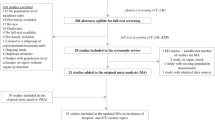Abstract
Objective: An instrument able to estimate the direct costs of stays in Intensive Care Units (ICUs) simply would be very useful for resource allocation inside a hospital, through a global budget system. The aim of this study was to propose such a tool.
Design: Since 1991, a region-wide common data base has collected standard data of intensive care such as the Omega Score, Simplified Acute Physiologic Score, length of stay, length of ventilation, main diagnosis and procedures. The Omega Score, developed in France in 1986 and proved to be related to the workload, was recorded on each patient of the study.
Setting: Eighteen ICUs of Assistance Publique-Hopitaux de Paris (AP-HP) and suburbs.
Patients: 1) Hundred twenty-one randomly selected ICU patients; 2) 12,000 consecutive ICU stays collected in the common data base in 1993.
Measurements: 1) On the sample of 121 patients, medical expenditure and nursing time associated with interventions were measured through a prospective study. The correlation between Omega points and direct costs was calculated, and regression equations were applied to the 12,000 stays of the data base, leading to estimated costs. 2) From the analytic accounting of AP-HP, the mean direct cost per stay and per unit was calculated, and compared with the mean associated Omega score from the data base. In both methods a comparison of actual and estimated costs was made.
Results: The Omega Score is strongly correlated to total direct costs, medical direct costs and nursing requirements. This correlation is observed both in the random sample of 121 stays and on the data base’ stays. The discrepancy of estimated costs through Omega Score and actual costs may result from drugs, blood product underestimation and therapeutic procedures not involved in the Omega Score.
Conclusions: The Omega system appears to be a simple and relevant indicator with which to estimate the direct costs of each stay, and then to organise nursing requirements and resource allocation.
Similar content being viewed by others
References
Knaus WA, Wagner DP, Zimmerman JE, Draper EA (1993) Variations in mortality and length of stay in Intensive Care Units. Ann of Int Med 118: 753–761
Singer M, Meyers S, Hall G, Cohen SL, Armstrong RF (1994) The cost of intensive care: a comparison on one unit between 1988 and 1991. Intensive Care Med 20: 542–549
Jacobs CJ (1994) Mortality and quality of life after intensive care for critical illness. Intensive Care Med 14: 217–220
Mundt DJ (1989) Intensive Care Unit patient follow-up mortality, functional status, and return to work. Arch Intern Med 149: 68–72
Loirat Ph (1990) Results of intensive care: assessment of the quality of life. Intensive Care Med 16: S 25 (91)
Ridley S (1991) Cost of intensive therapy: Anaesthesia 46: 523–530
Birnbaum M, Walleck CA (1993) Rationing health care; impact on critical care. Crit Care Clin 9: 585–602
Noseworthy TW, Konopad E, Shustack A, Johnston R, Grace M (1996) Cost accounting of adult intensive care: methods and human and capital inputs. Crit Care Med 24:1168–1172
Oye RK (1991) Patterns of resource consumption in medical intensive care. Chest 99: 685–689
Rodrigues JM (1986) La nouvelle comptabilité hospitalière: l’analyse des couts par groupes homogénes de malades. Gestions hospitalieres 258: 500–507
Giraud A (1985) Le “systéme Fetter” ou la définition du produit hospitalier par DRG. Journal d’Economie Médicale 3:183–190
Description de la nouvelle procédure d’allocation budgétaire (1995) Direction des Hôpitaux. Ministère des Affaires Sociales, de la Santé et de la Ville
Pourriat JL (1990) Groupes homogènes de malades: analyse critique. In: Le Gall JR, Loirat Ph (eds) Evaluation en Réanimation, Paris, pp 157–168
Saulnier F, Naiditch M, Comar L, Nicolas F (1995) Système GHM et réanimation: résultats de l’étude SRLF-Image. Réan Urg 75–89
Saulnier F (1992) Management of ICUs. A simplified index to assess the nurse workload: ICU PRN. Intensive Care Med 18, S 71 (129)
Rappoport J (1990) Explaining variability of cost using a severity of illness measure for ICU patients. Med Care 28: 338–348
Mälstam J (1992) TISS: a method for measuring workload and calculating costs in the ICU. Acta Anaesthesiol Scand 36: 758–763
Le Gall JR, Loirat P, Mathieu D, Williams A (1990) The patients in management of intensive Care. In: Miranda DR, Williams A, Loirat Ph (eds) Guidelines for better use of resources. Kluwer, Dordrecht, pp 11–53
Lazard T, Metel O, Guidet B, Maury E, Valleron AJ, Offenstadt G (1996) AIDS in a Medical Intensive Care Unit. Immediate prognosis and long-term survival. JAMA 276:1240–1245
Le Gall JR, Loirat Ph, Alpérovitch A et al. (1984) Simplified acute physiology score (SAPS) for ICU patients. Crit Care Med 12: 975–977
Durand-Zaleski I (1994) Estimating the cost of intensive care. Intensive Care Med 20: 538–539
Merlière Y, Dutheil M (1992) Détermination d’une typologie des services de reanimation mèdicale dans les hôpitaux de l’AP-HP. Rean Urg 1,1005 (094)
Groeger JS et al. (1992) Descriptive analysis of critical care units in the United States. Crit Care Med 20: 846–863
Dragsted L, Qvist J (1992) Epidemiology of intensive care. Int J Technol Assess Health Care 8: 395–407
Jars-Guincestre MC, Leleu G, Comar L, Naiditch M, Le Gall JR (1992) Choix du diagnostic principal d’un séjour de réanimation polyvalente adulte. Réan Urg 1,1066 (098)
Nicolas F (1995) L’audit médical interne répétitif comme instrument de maît-rise médicalisée des dépenses. RéaUrg 123–131
Le Gall JR, Lemeshow S, Saulnier F (1993) New simplified acute physiology score (SAPS II) based on a European North American Multicenter Study: JAMA 270: 2957–2963
Author information
Authors and Affiliations
Rights and permissions
About this article
Cite this article
Sznajder, M., Leleu, G., Buonamico, G. et al. Estimation of direct cost and resource allocation in intensive care: correlation with Omega system. Intensive Care Med 24, 582–589 (1998). https://doi.org/10.1007/s001340050619
Received:
Accepted:
Issue Date:
DOI: https://doi.org/10.1007/s001340050619




